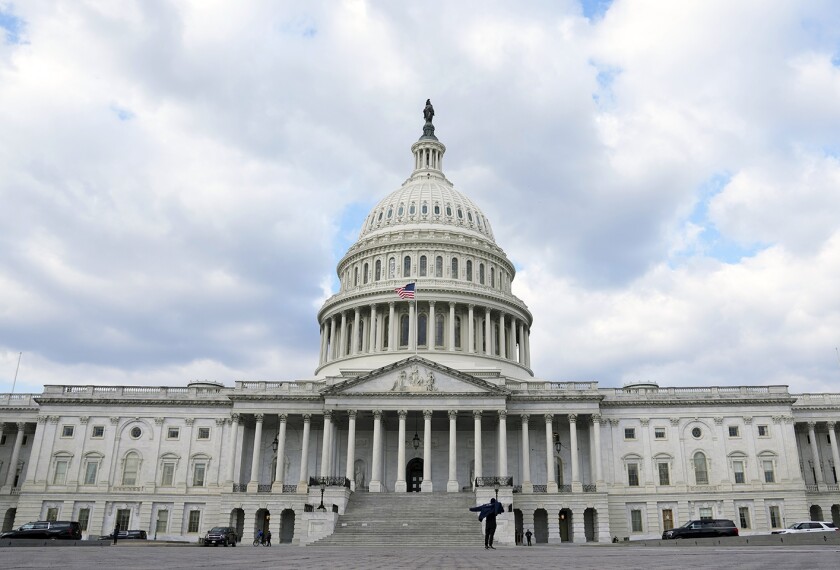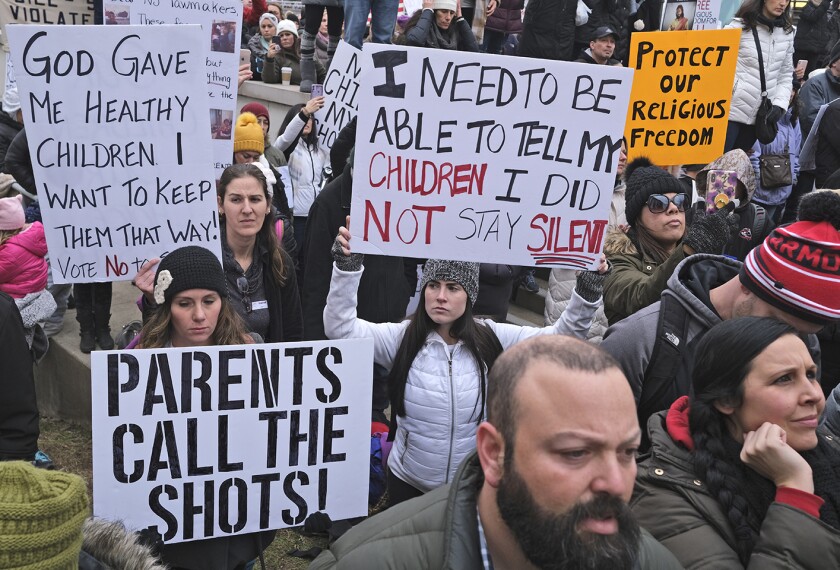States and districts are increasingly at odds over who should be on the hook for crushing K-12 pension costs, which are starting to crowd out the money available for teacher salaries and other academic initiatives.
The nation as a whole last year spent around $12,000 on every one of its 51 million public school children. Robert Costrell, a top school finance researcher at the University of Arkansas, estimates that K-12 pension contributions and newly earned benefits amounted to almost $1,445 per student last year—more than a 10th of per-pupil spending overall. That’s triple the amount the nation spent in 2004.
Pension costs are typically split among employees, districts, and states. States have been blamed for inept management, leading to unsustainable pension debt. At the same time, states want districts to be aware of the pension burden when they negotiate teacher contracts that can lead to large payouts upon retirement.
But in trying to reset the balance, there’s a debate in states including California, Connecticut, and Illinois over how much wealthy districts should pay toward pensions versus how much poor districts should pay.
New research suggests that the way many states have sought to rebalance pension costs effectively undercuts and reverses the effects of progressive school funding formulas and worsens inequities between wealthy and poor districts.
The reason: Wealthier districts typically have older and more stable teaching forces. Their pension costs are typically much higher than those of low-income districts, which have a younger teaching force and high staff turnover. That means a wealthier district may benefit more if the state takes on a bigger proportion of the pension load.
In California, Democratic Gov. Gavin Newsom, with billions of dollars in surplus cash to spend, decided to make an in-kind $850 million paydown of districts’ pension debts earlier this year. It was seen politically as a bailout for districts squeezed by a promise they made in 2013 to take on a larger share of the state’s teacher-pension liability.
But a study published last week by the Opportunity Institute, an advocacy organization based in Berkeley, Calif., shows that because the state made a flat percentage payment for every district, wealthier districts benefited more than poor districts.
“It exacerbates inequities and in a hidden way,” said Carrie Hahnel, who conducted the study for the Opportunity Institute, which pushes for more funding for poor children. She advocates for the state to change the way it pays for pensions. “What this does, it takes a great deal of state funding and cuts against [the state funding formula].”
In Illinois and Connecticut, where the states have historically carried the majority of the K-12 pension burden, politicians are at odds over whether to offload more of those costs onto districts and how to go about doing that.
“School districts and teachers are the ones who have consistently made our full contributions to the system,” said David Bein, the assistant superintendent of business services for Barrington 220, a suburban district outside Chicago. “The only party that has not been paying its full share is the state. I think it’s pretty disingenuous to say, ‘Now we’re going to transfer the responsibility.’ ”
K-12 finance experts have historically known little about the ways that districts benefit from states’ contributions toward pension costs. But last year, the Government Accounting Standards Board, a private standards-setting organization, began asking states to break out state pension subsidies by school district.
The resulting database was a bonanza for researchers who have always wondered what impact pension costs have had on state and district K-12 spending.
A paper by several school finance researchers that’s currently being peer-reviewed found that 23 states in 2018 spent an estimated $19 billion on K-12 pension costs. (By way of comparison, federal Title I spending for disadvantaged students across all states was $15.8 billion that year.)
Those same researchers found that, in some states, the pension subsidy for districts was minimal—Georgia’s $4.5 million contribution, for example, amounted to just $2 per student. But in Connecticut, Kentucky, Massachusetts, New Jersey, and Vermont, the state pays for the entirety of teachers’ pension costs.
In every case, researchers found, the pension debt was distributed in a manner blind to district need.
As pension costs continue to climb, the researchers’ paper said, “a serious unintended consequence might result: Some states might be offsetting progressive state aid with state pension subsidies that favor wealthy school districts. ... We predict that, in some states, state pension spending is running completely counter to the progressive purpose of general state aid.”
James Shuls, a professor of educational leadership and policy studies at the University of Missouri-St. Louis and one of the authors of the paper, urges states to engage in a more robust debate over which districts should pick up their share of pension costs, similar to the same sorts of debates states engage in with general K-12 state aid.
“If your K-12 pot of money is fixed, more and more of that money is getting eaten up by pensions,” Shuls said. “Shifting some of the onus onto districts is the right way to go.”
Political Hurdles
That’s much harder than it sounds.
Two years ago, Connecticut’s then-Democratic Gov. Dannel Malloy slipped into his budget a proposal to force municipalities to take on more than a third of the state’s K-12 pension costs in order to help close a $1.7 billion statewide deficit. Local officials threatened to sue, arguing that the state created the pension crisis and therefore was legally required to pay all its costs. The state’s superintendents association said the proposal was “at best extremely foolish public policy and at worst highly irresponsible.”
Malloy killed the proposal. But this summer, a commission recommended several ways to pay down the costs. Politicians, under the leadership of a new governor, Ned Lamont, also a Democrat, are expected to take up the issue again this winter.
If states ask districts to pay more for pension costs, many districts would be forced to increase property taxes, which voters have traditionally been hostile toward.
Illinois Battle
That dilemma is front and center in Illinois. That state has a statewide pension system that covers all districts but Chicago, which has its own teacher-pension system.
In 2017, Illinois passed a new K-12 funding formula to increase state school aid and redistribute it based on student need. In order to get the funding formula across the finish line, state and district officials agreed to set its pension crisis aside. They also agreed, as a rule, that no district would ultimately lose funding.
So Jessica Handy, an influential lobbyist with Stand for Children, which promotes more spending on poor children, received immediate backlash when she came up with a proposal to have wealthier districts pay more of their share of pension costs.
The state’s $4.5 billion payment toward its Teacher Retirement System this year equaled the amount of general K-12 aid it gave to districts that benefit from that pension. Because the state spends so much money on pensions, it’s not able to spend as much on poor districts, Handy said.
“We fixed one side of the coin, but we still had this major funding inequity,” she said, referring to the state’s new funding formula.
Bein, the business official in the Barrington district, opposes any effort by state legislators to increase districts’ pension costs.
“The state is going to continue to collect money, use it for other stuff, and then transfer the responsibility to pay to districts while giving [them] no additional revenue to do so,” he said. “To me, that seems like a bad idea.”
He said Illinois lawmakers have severely limited districts’ taxing authority and districts, many of which have already reached their taxing cap, would be forced to cut services.
Such cuts would likely fall on the backs of teachers, warns Will Lovett, a lobbyist with the state teachers’ union. He also worried that changes to teacher benefits could hurt recruitment and retention efforts amid a statewide teacher shortage.
“By creating this type of proposition, you now create winners and losers,” Lovett said about Handy’s proposal. “We need to get Illinois to fulfill its financial commitment. If you put in a career of 25 or 30 years as a teacher, that you’re going to be able to retire in dignity, that means a lot for our educators.”





